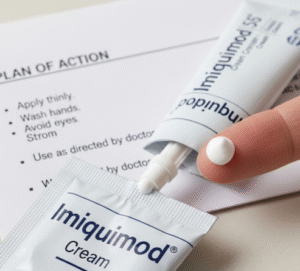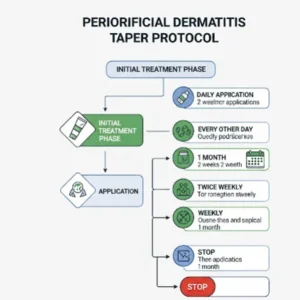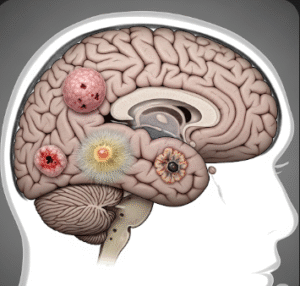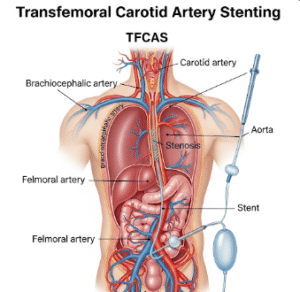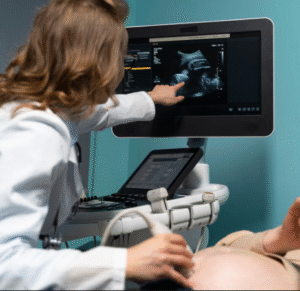Overview
Back labor refers to intense lower back pain experienced during childbirth, often associated with fetal positioning and uterine contractions. Unlike typical labor pain, which is concentrated in the abdomen, back labor is felt primarily in the lower back, sometimes radiating to the sacrum or hips. It occurs in approximately 25–30% of laboring women and can significantly impact comfort and the overall labor experience.
In South Korea, maternity hospitals and obstetrics clinics provide comprehensive care for back labor, including pain management, fetal monitoring, and non-pharmacological and pharmacological interventions to support a safer and more comfortable childbirth.
Key Facts
Highlights:
➡️ Back labor is most commonly associated with fetal occiput posterior (OP) position, where the baby’s head presses against the mother’s sacrum.
➡️ Pain can be severe, continuous, and more difficult to manage than abdominal labor pain.
➡️ Non-pharmacological and pharmacological strategies are available to relieve discomfort.
➡️ Proper positioning, support, and monitoring improve maternal comfort and labor outcomes.
➡️ South Korea offers advanced obstetric care, including epidural analgesia, birthing support, and postpartum follow-up.
What is Back Labor?
Back labor is labor pain predominantly felt in the lower back, often described as:
- Deep, intense pressure or aching in the sacral area
- Pain radiating to the hips or buttocks
- Continuous or pulsating discomfort during contractions
- Pain that may persist between contractions
It is usually associated with the baby being in an occiput posterior position, meaning the back of the baby’s head faces the mother’s back, causing the skull to press against the sacrum.
What Symptoms are Related to Back Labor?
Women experiencing back labor may have the following symptoms:
- Severe lower back pain during contractions
- Pain radiating to hips, buttocks, or thighs
- Pressure in the pelvic region
- Difficulty finding comfortable positions
- Increased anxiety or stress due to persistent discomfort
- Pain that may last throughout the active and transitional phases of labor
These symptoms may vary depending on labor progression, fetal position, and maternal anatomy.
What Causes / Possible Causes of Back Labor?
Highlights:
➡️ Fetal Occiput Posterior Position (OP): The most common cause, where the baby’s head presses on the sacrum.
➡️ Large Baby (Macrosomia): Increased pressure on the lower back and pelvis.
➡️ Short Maternal Stature or Pelvic Shape: Can influence fetal positioning and labor discomfort.
➡️ Rapid or Prolonged Labor: Intense contractions may increase back pain perception.
➡️ Maternal Stress and Tension: Muscle tightness can exacerbate pain.
➡️ Previous Back Issues: History of back pain, injury, or scoliosis may intensify discomfort.
➡️ Multiple Pregnancies: Twins or multiples can contribute to positioning challenges.
When Should I See My Doctor?
Highlights:
➡️ During labor, if pain becomes severe or unmanageable despite non-pharmacological methods.
➡️ If back labor is accompanied by abnormal bleeding, decreased fetal movement, or other complications.
➡️ For prenatal consultation, discuss strategies to reduce the risk and severity of back labor.
➡️ If there is a history of chronic back pain, consult your obstetrician for individualized pain management planning.
➡️ Early engagement with medical staff ensures proper monitoring of both mother and baby during labor.
Care and Treatment
Back labor care focuses on pain relief, comfort, and safe labor progression:
Highlights:
➡️ Non-Pharmacological Methods:
- Position changes: hands-and-knees, leaning forward, side-lying
- Pelvic rocking or swaying
- Use of birthing balls or support pillows
- Heat or cold therapy on the lower back
- Massage or counterpressure applied to the sacrum
➡️ Pharmacological Methods:
- Epidural analgesia for effective lower back and abdominal pain relief
- Nitrous oxide (laughing gas) for moderate pain management
- Intravenous opioids if appropriate and under medical supervision
➡️ Supportive Care:
- Continuous support from midwives, doulas, or family members
- Encouragement and guidance for relaxation and breathing techniques
- Monitoring of maternal vital signs and fetal heart rate
➡️ Labor Positioning: Adjusting maternal posture can facilitate fetal rotation and reduce back pressure.
➡️ Postpartum Care: Pain management, monitoring for musculoskeletal strain, and guidance on exercises to strengthen back muscles.
Treatment Options in Korea
South Korea provides comprehensive obstetric services to manage back labor effectively:
Highlights:
➡️ Maternity Hospitals: Expert obstetric care with labor and delivery monitoring.
➡️ Pain Management Clinics: Epidural analgesia, nitrous oxide, and other pharmacological interventions.
➡️ Midwifery and Doula Support: Continuous labor support and guidance for positioning and comfort techniques.
➡️ Physical Therapy for Labor: Prenatal and postpartum exercises to support back strength and flexibility.
➡️ Advanced Imaging: Ultrasound to assess fetal position and guide labor management strategies.
➡️ Multidisciplinary Approach: Obstetricians, anesthesiologists, midwives, and physiotherapists collaborate for optimal care.
➡️ Medical Tourism Support: Multilingual consultations, personalized birth plans, and follow-up care for international patients.



